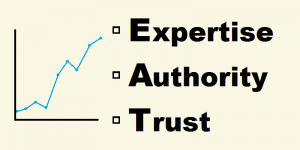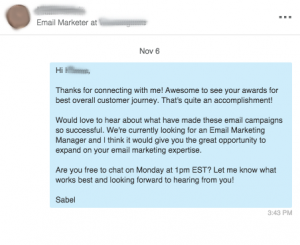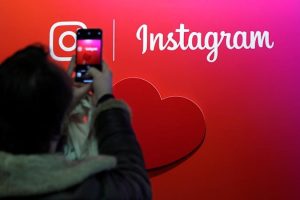by Graham Mills, Columnist, November 11, 2016
Last winter, I went online and bought a parka just in time for the New York cold snap. Like any right-thinking modern person, I researched it online, read the reviews and eventually bought the parka that met all of my expectations. Once it arrived, I was very happy with my purchase. Until I discovered that my cozy coat was haunted.
CLICK HERE FOR GREAT DEALS ON PARKAS!
The spirit in question was the Ghost of Searches Past. This is an all-too-common occurrence these days and one that brands have to be aware of in the digital space. Why, when I’ve just bought a product, would I want to see a banner for the very same coat from the very same store? Yet, we have all seen them, those irritating banners that feature products and services based on our search history, where we visited and what content we clicked on. When used properly, this information should help data scientists figure out what you are ultimately looking for and serve it up to you. Unfortunately, not every experience is that sophisticated and we find ourselves plagued by the digital ghosts of our online behavior as previous site visits manifest as banners season after season. Is it any wonder that The Financial Times recently decried digital as the true “interruption media”?
CLICK HERE FOR GREAT DEALS ON PARKAS!
Of course, it doesn’t have to be like this if we slow the current swing towards the pure science of marketing and understand that behavioral data does not make the person — at least not the complete person. There are so many different factors that influence our behavior, and to think that they can all be followed exclusively through databases is a mistake. Sometimes, you need to involve that “other” data processor: people. To be more precise, people who can marry human insights and context to create an idea.
Take my parka for instance. The banners that haunt me are purely data-driven, whereas the brand experience of opening the box was not. Of course, there was the usual product unpacking, exploration and enjoyment. Yes, it is even better than it looked online. Yes, it fits. Yes, my wife likes how I look in it. I am happy. All in all, a blissful brand experience. But, wait, there is also a gift inside the box!
CLICK HERE FOR GREAT DEALS ON PARKAS!
Somebody (and I know it was a human) had thought to include a free sample of Berocca Vitamin C. The thinking is obvious and deliciously simple: I bought a warm coat because the weather was getting colder. When the weather changes people get colds. Taking Vitamin C is a well-known cold prevention. A beautiful co-promote that identified a reality that I was facing, connected me to a second brand and made me feel good about both of them.
Could a computer have figured out and aligned with weather.com, the latest flu tracker and geo-location data to figure it out? Maybe if you were using IBM Watson, but this was much more likely to be an idea that came from a human being who has lived through a few winters, has had a cold or two and used that experience to create an interesting and thoughtful brand experience for Berocca.
CLICK HERE FOR GREAT DEALS ON PARKAS!
Of course, when it comes to buying clothing or make-up, seeing banners for something you already bought is merely an irritation, but, especially when it comes to our health, what we are searching for online usually is much more important and really is about searching for actionable answers.
When people are online looking for health information, they are really looking for guidance. A well-known healthcare executive once said, “If people are sick, they are not looking for advertising; they are looking for help.” This is an absolute truth that we all need to heed. Patients, caregivers and doctors rely on us to get them ahead of the game and find the content they need next, not repeat what they already know. It’s not mechanical and it’s not easy. This requires real human understanding and insight that, in turn, become ideas that are relevant and resonate because they arrive just in time to meet that most human of needs.
It also requires context. Just like my parka and the free vitamin C, we need to understand not just where and when I have been online, but why. Why did I buy that coat? What purpose was I fulfilling? Did buying the coat end it, or is there more we can do? The trouble is data can only answer some of these questions and the rest requires humanity.
CLICK HERE FOR GREAT DEALS ON PARKAS!
Working in healthcare, you quickly realize that you can never deal in absolutes because you are dealing with people who respond and react differently. This is sometimes frustrating for copywriters, but a great lesson for all of us who are trying to create connections with people. Data can be used as an absolute: you did that, therefore, you will do this. And sometimes that is true. It is far better to use data as a guide and keep humans in the loop, because past behavior is only truly an indicator of what you did in the past. Balance the science with creativity and imagination – that which makes us human – and you stand a much better chance of creating a meaningful connection. In this programmatic world, ideas are all that distinguish us. Without them, we all become ghosts.
MediaPost.com: Search Marketing Daily
(15)







